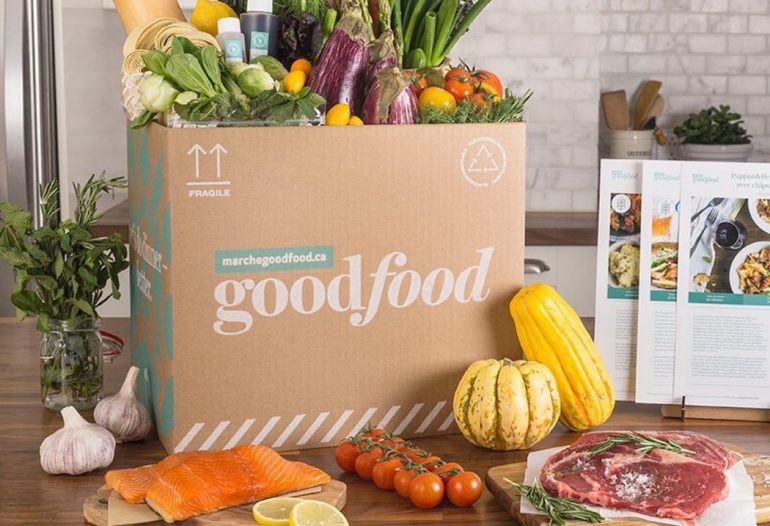Montréal-based online grocery and meal kit delivery company Goodfood has reported a record quarterly revenue of $100.7 million.
The revenue milestone was reported in Goodfood’s financial results for the second quarter ended February 20, 2021. Goodfood claimed its revenue grew 71 percent year-over-year from $41.9 million.
Goodfood’s growth comes after a year of disruption in Canada’s grocery industry.
Goodfood offers an online grocery service in Canada, aiming to deliver fresh meal solutions and grocery items for members from across Canada. The company has been trading publicly on the Toronto Stock Exchange since June 2017.
In addition to reporting record-high revenue, Goodfood also reached a record cash position in the second quarter of $163 million. Its gross profits also reached a record of $30.6 million, an increase of 72 percent year-over-year.
“The continued strength of our members’ interactions with our offering has led to increased basket sizes and order frequencies, and that, combined with our strong balance sheet, positions us ideally to further penetrate the online grocery market that is still in the early days of its digitization,” said Jonathan Ferrari, CEO of Goodfood.
The company attributed this marked growth to its continued focus on its growth strategy, which entails its product offering, geographic footprint, and marketing.
Goodfood has indeed made geographic expansion a significant part of its growth plans in recent months. In February, when it closed a bought deal offering of common shares for $60 million, the company said it planned to use the proceeds to expand its operations in Montreal and the GTA, as well as launch in Vancouver, Calgary, Ottawa, and Quebec City.
In terms of its offering, Goodfood has also expanded its services as of late. Initially offering prepared meal kits to subscribers, the company has since grown to include ready-to-eat meals, grocery items, and breakfast products.
RELATED: Uber launches grocery delivery service in Toronto, Montreal
Goodfood’s growth comes after a year of disruption in Canada’s grocery industry. Research conducted by PayPal in April 2020 found nearly one-third of Canadians were shopping online for groceries, up from 19 percent in a survey conducted just four weeks earlier. A further 81 percent indicated they expect to continue shopping online either the same amount or more once the immediate crisis is over.
Canada’s largest grocers have taken note of this trend, and are expanding their own e-commerce services to stay competitive.
Save On Foods has shifted its system to offer deliveries. The grocer has outfitted 150 vans to make drop-offs in British Columbia, Alberta, Manitoba, and Saskatchewan, and has trained staff to do the personal shopping and the deliveries. Loblaws is looking to innovate its online ordering service, partnering with Gatik on self-driving vehicles for grocery delivery.
It appears some of these grocers are seeing upward traction as a result. In early 2021, Sobeys reported that its e-commerce sales rose by 241 percent year-over-year in 2020.
Though Goodfood has continued to operate as an essential service during the pandemic and reports accelerated growth and demand, it did not provide specific numbers in its financial outlook. The company said the pandemic’s magnitude, duration, and severity are “difficult to predict” and could affect estimates provided in a financial outlook.
Image courtesy of Goodfood


